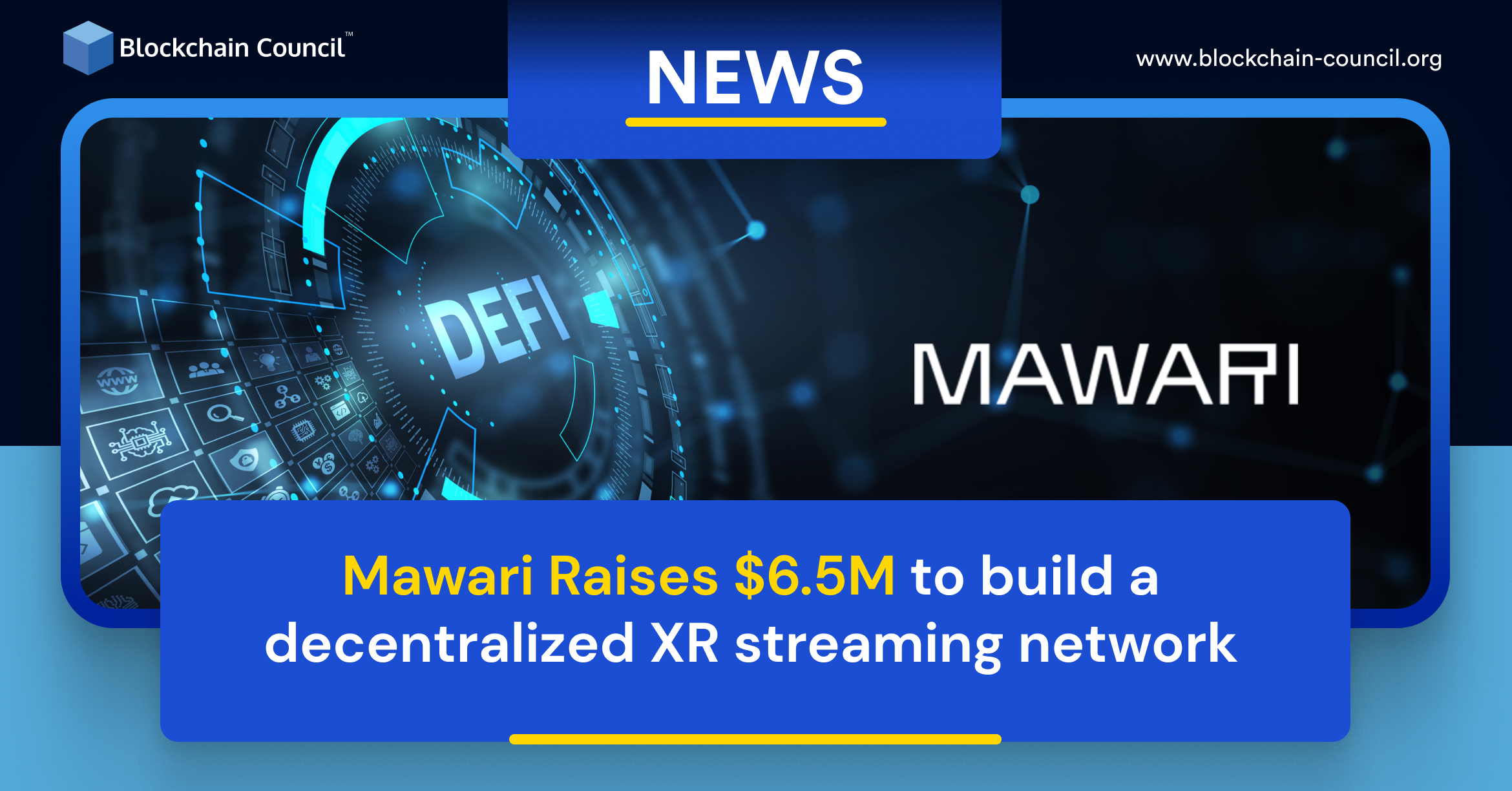
- Blockchain Council
- September 17, 2024
Mawari has raised $6.5 Million to allow faster 3D content development and delivery cycles for Metaverse. It would offload the networking and processing requirements for the next-gen internet with crucial technologies like compression, machine learning, and Blockchain. The company said that the oversubscribed round was led by Decasonic and Blockchange Ventures, with additional investments from several other investors, including Primal Capital, Outlier Ventures, Accord Ventures, Anfield, Abies Ventures, and others.
The CEO of Mawari, Luis Oscar Ramirez Solorzano, said, “We are excited to have achieved this major milestone with such a prestigious group of investors who share our mission and ambition to deliver the Metaverse to everyone.”
He said in an interview with Gamesbeat that the firm had been labeled “the Akamai of Metaverse.” Akamai’s Internet content delivery networks is where Akamai set up different points on the Internet allowing you to download videos or games in a manner that suits your speed as the assets were close to you. It was a good way of accessing an unclogged internet, and Mawari also sees it as a “not bad” analogy. He said, “We’ve been through the waves of AR and VR with the mission of becoming the Akamai of XR (extended reality). We are moving to democratize access to immersive content. That’s how we started.”
The funds raised in digital assets and venture equity will allow Mawari to expand its research and development capabilities and move rapidly to launch a decentralized extended reality and 3D content delivery platform based on Web3 principles. The platform will be powered by real-time 3D streaming and rendering technologies supported by decentralized network partners.
Ken Seiff, the managing partner of Blockchange Ventures, said, “What Mawari is building isn’t just better. It’s also faster and cheaper. We were initially drawn to the Mawari team by their vision for leveraging decentralized computing with all the implications for spreading the technology broadly and making it more accessible to a much larger market. Then we learned from customers and partners that they were using Mawari simply because it was better. We love Mawari’s combination of forward vision and present practicality.”
Problem Statement
Experts believe that everything on the Metaverse, from online gaming to cloud services and video streaming, could create the problem of clogged data pipes. Ramirez Solorzano said that the technical problems are similar to video streaming. You might have noticed when you press “play” on any video streaming platform like Netflix, it directly starts playing movies and videos without requiring you to download them on your device and then watch the video. He said, “People already take this for granted. And when we talk about the Metaverse, everybody has a very different vision of the Metaverse. But in the end, this is a 3D world that can be an overlay on our world or a world that will interact seamlessly with our devices, whether it’s a smartphone or a headset. What people don’t realize is that the infrastructure that we have today, like the CDN, does not work for Metaverse content at scale. So this is what we call the elephant in the room. The Metaverse cannot be scaled to mobile XR devices.”
Several other companies, like Subspace, are attacking this problem with a different perspective by creating an alternate network with special hardware that routes internet bottlenecks. But that perspective turned out to be a capital-intensive way of solving the problem, so the company shut down. Mawari took advantage of existing specialized hardware by splitting rendering tasks between user devices and the decentralized network and data centers.
The Solution
The Mawari network offers a solution that eliminates limited scalability and results in the mainstream adoption of extended reality and Metaverse applications. The technology functions on a core patent-pending 3D streaming CODEC and the split rendering algos that are already popular worldwide and among investors.
Mawari.io is building the Mawari Network. As mentioned earlier, it is a 3D content delivery mechanism that would break the bottlenecks for Metaverse content to mobile streaming. It is a revenue-sharing, distributed rendering network powered by the present underutilized network and computing resources. It can also allow scaling and managing service quality since it is already Blockchain-enabled.
The CEO of Decasonice said in a statement, “Mawari has developed a fundamental backbone technology that will deliver the highest quality augmented-reality content in the Web3 / Metaverse era, significantly evolving the community environment and experience.”
Mawari uses machine learning, unique 3D compression, and split rendering algorithms with scaling delivery via a decentralized 3D content delivery platform powered by a GPU network powered by nodes that run the Mawari Engine.
Ramirez said, “The Metaverse cannot scale until consumer-grade content can be efficiently streamed simultaneously to large numbers of mobile devices. There is no infrastructure today that can enable this. Mawari solves these bottlenecks by building a decentralized render network.”
He also said that the firm has reduced the bandwidth requirement by 200 times with a 3D streaming CODEC capable of a massive intake of 4-gigabit data and reducing it to 10-14 MB per second.
Why does it matter?
Major players in the industry, including Microsoft, Apple, Google, Meta, and Qualcomm, are looking for a platform that can efficiently help with real-time 3D content delivery. Mawari ‘s breakthrough network and technologies are highly motivated and focused on redefining the immersive content delivery system and making it more accessible to everyone.
Ramirez said, “We do it in real-time, and it is perfectly synchronized. So this allows, for example, digital humans to be streamed into virtual worlds. And that enables what everybody’s talking about, interoperability between Metaverses. We could stream high-quality avatars into The Sandbox or any Unity-based game or Metaverse.”






































































 Guides
Guides News
News Blockchain
Blockchain Cryptocurrency
& Digital Assets
Cryptocurrency
& Digital Assets Web3
Web3 Metaverse & NFTs
Metaverse & NFTs
